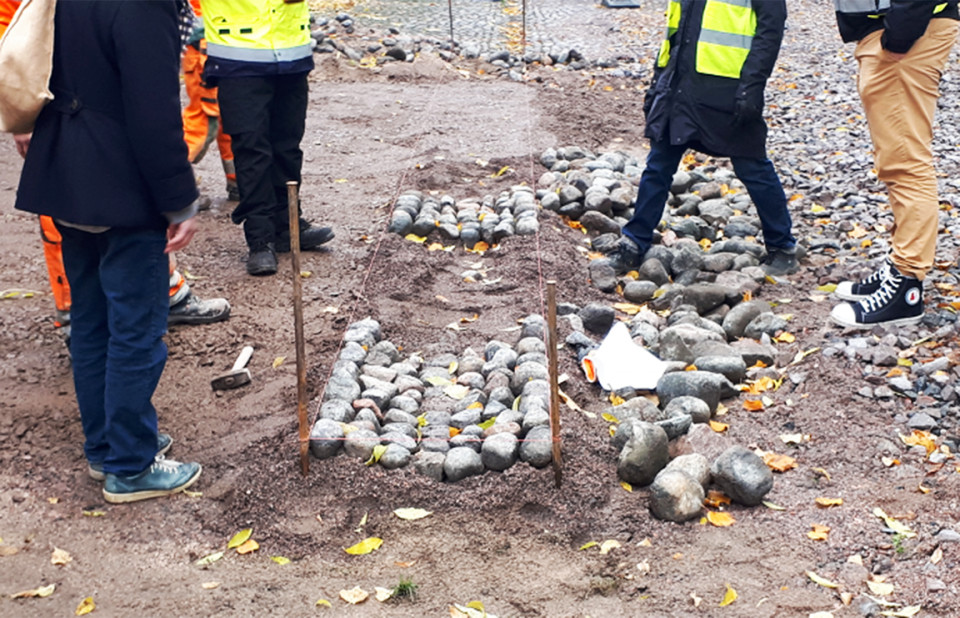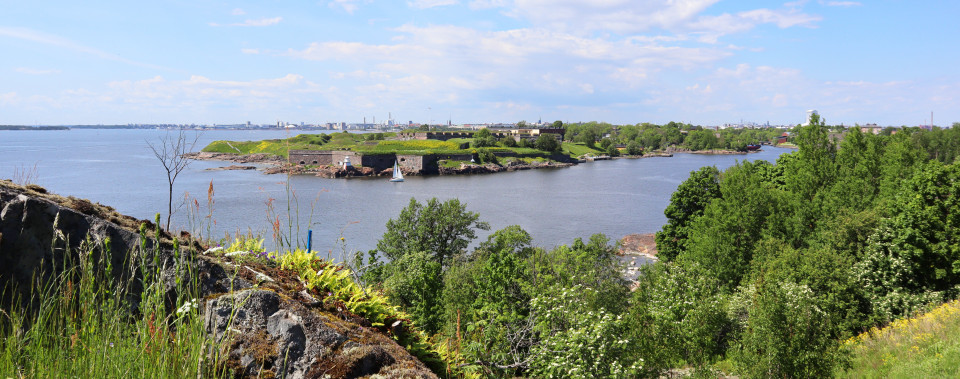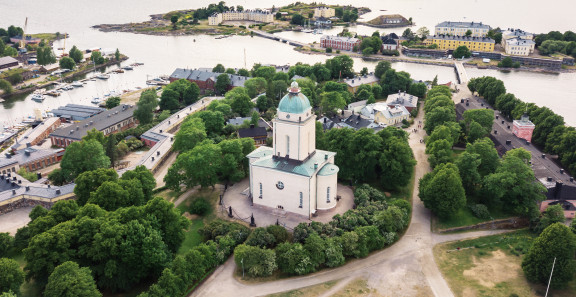The massive renovation project includes restoring the historical macadam coating of the alleys and walking trails of Suomenlinna sea fortress and updating the municipal technology to the 21st century. With sustainable maintenance, our shared cultural heritage holds its value for the future generations as well.
Suomenlinna is a unique blend of past and present. It is a UNESCO World Heritage Site and a popular destination for tourists, but also a year-round home for 800 residents and one of the Helsinki city districts in Finland.
The new and the old also meet in the multi-year renovation project currently in progress, in which the pathways of Iso Mustasaari are renovated while respecting the original appearance while municipal technology – such as water, runoff water and sewer networks – is renovated to meet modern standards. Planning of the project begun in 2017, the renovation begun in 2020, and the project will be finished by fall 2023.
When we began to explore the possibility of renovating the central walking trails of Suomenlinna, we also looked beneath the surface and found that much of the municipal technology was also at the end of its service life.
Pia Kurki, Suomenlinna maintenance board
– It all started with the road surfaces, which had been poorly maintained in places. Especially the macadam coating, which is rolled in layers and originates from the 19th century, had broken and become pitted. When we began to explore the possibility of renovating the central walking trails of Suomenlinna, we also looked beneath the surface and found that much of the municipal technology was also at the end of its service life, says landscape architect Pia Kurki from the Suomenlinna maintenance board.
The Suomenlinna maintenance board is a state agency under the Ministry of Education and Culture. The board restores, maintains, tours, and governs Suomenlinna, whereas the City of Helsinki is responsible for e.g. the pathways and municipal technology of Suomenlinna and acts as the project client.

Multidisciplinary project
Sitowise has been responsible for project planning, which includes the renovation of water, runoff water and sewer networks in Iso Mustasaari. Likewise, Sitowise has drafted detailed plans for the renovation of the old walking trails and alleys.
Restoration basically means that even after the renovation, Suomenlinna will look the same as before, but of course we will act responsibly and for example improve accessibility where possible.
Juha Väätäinen, Sitowise
– The goal in Suomenlinna is to restore the surfaces under renovation to their original appearance, considering all the different layers formed in them throughout the ages. Upgrading the municipal technology will help maintain the vitality of Suomenlinna as a tourist destination and place of residence. Restoration basically means that even after the renovation, Suomenlinna will look the same as before, but of course we will act responsibly and for example improve accessibility where possible, says Juha Väätäinen, Head of Urban Engineering at Sitowise.
Väätäinen acts as the project’s manager and has been responsible for coordinating the plans with for example the electricity and district heating network operators.
– It is a huge puzzle, an ever-changing one, which we are trying to build together with several operators. From the designer’s point of view, Suomenlinna is a unique site. For example, the fastest and most direct route can’t simply be used for the water and sewer network, as the design must be based on existing trenches. This means that the plans are constantly updated as the work progresses, he says.
In addition to the Suomenlinna maintenance board, the City of Helsinki, and Sitowise, the project involves HSY, who are responsible for the water maintenance of Helsinki, Helen electricity network, Helen district heating, Finnish Heritage Agency, and an archaeological supervisor.
Suomenlinna is a particularly sensitive site with challenges to solve as the work progresses. We’ve been able to move forward smoothly with the commitment and cooperation from all parties.
Touko Leppänen, City of Helsinki
Cooperation in good spirit
Project manager Touko Leppänen from the City of Helsinki says that from the client's point of view, the large-scale project has even gone surprisingly well. The renovation isn’t too tightly scheduled, and the work is planned to proceed in stages to minimize inconvenience to tourists, residents, and other operators on the island.
– We have a particularly sensitive site in our hands, and it was clear from the get-go that there would be challenges to solve as the work progressed. I’m pleased with the commitment and cooperation from all parties. With their help, we’ve been able to move forward smoothly in the ever-changing circumstances, Leppänen says.
Pia Kurki agrees:
– I’m well aware that the patience of permanent residents and small businesses in particular is being tested when the regular routes are trenched. Nevertheless, the atmosphere surrounding the large-scale project has remained positive and we have also found a common ground in the work group to solve the challenges, she says.
World Heritage Site status restricts alterations
The World Heritage Agreement obliges to take care of the preservation of Suomenlinna’s authenticity. Renovation projects should therefore repair the old and not build new, if possible. In the case of macadam coatings, however, it was decided to do both.
– There’s macadam dating back to 1820s on the north side of the church, and we have restored it by patching up the broken spots. We did very well in the test patch, and you can’t really tell the difference between the old and the new. The macadam coating in Makasiiniranta on the other hand was made in the 1990s and therefore is no longer original, and we have already renewed it completely, says Ismo Häkkinen, leading consultant of landscape design at Sitowise.
We hope that the surfaces will last well into the next generations, so we considered future maintenance practices together with the maintenance board.
Ismo Häkkinen, Sitowise
Sometimes you need to consider today’s requirements in the repair solutions and choose the solution accordingly.
– The main reasons for the poor condition of the walking trails in Iso Mustasaari are vehicular traffic, extensive maintenance runs, and winter maintenance: 200-year-old roads simply cannot withstand 21st century vehicles. The increased number of visitors also places stricter requirements on maintenance. For these reasons and due to the municipal technology under the main route, the macadam is replaced with a gravel surface on the main route, which is very well suited to the historical milieu. Our key task is also to consider future maintenance practices together with the maintenance board, as we hope that the surfaces will last well into the next generations, Häkkinen says.
Treasuring the old is sustainability
In the cultural heritage strategy currently being prepared in Finland, cultural heritage is seen as a unifying, positive part of building a sustainable future. Responsibility for cultural heritage belongs by definition to everyone.
The renovation project of Suomenlinna's walking trails and municipal technology is bearing this responsibility at its best.

